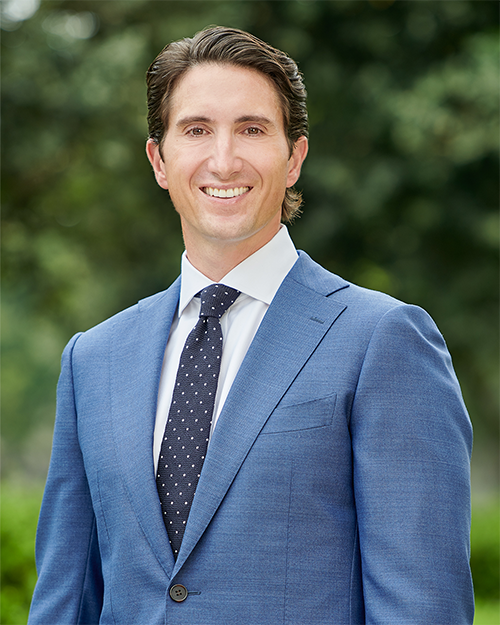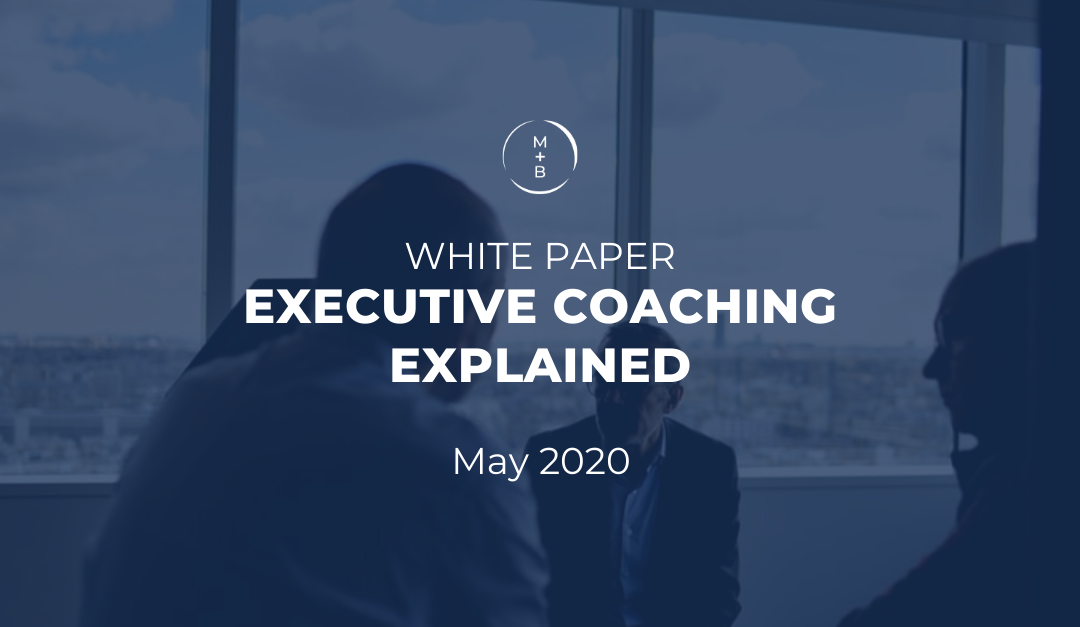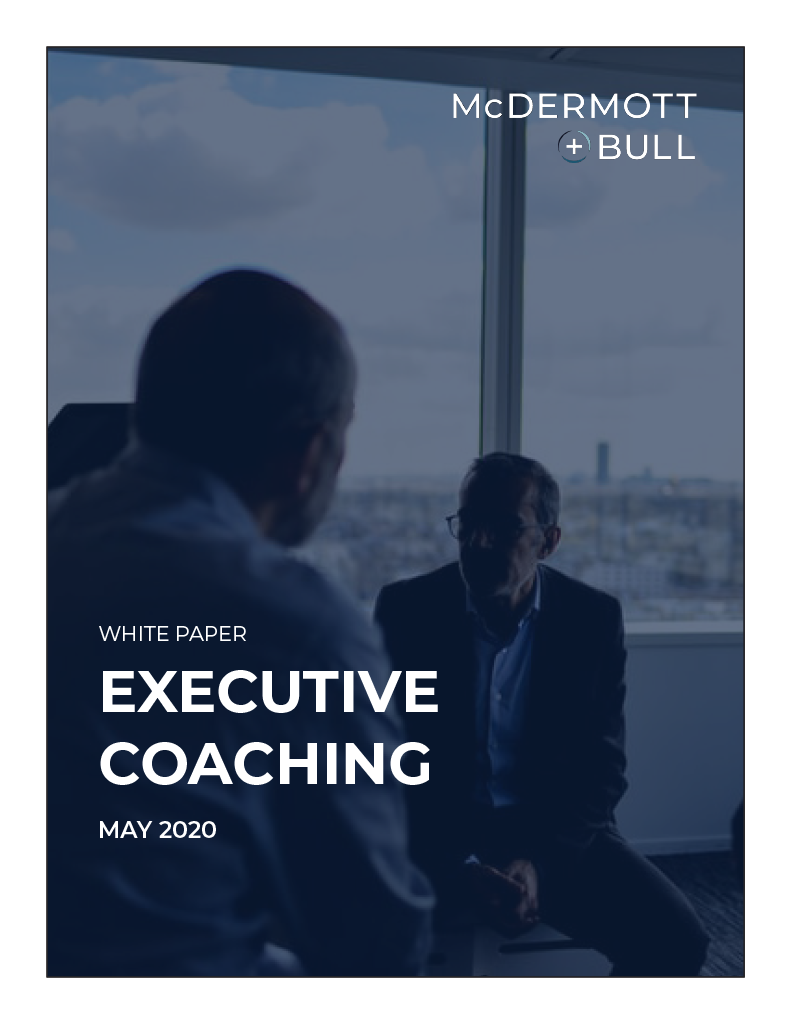EXECUTIVE COACHING: ENHANCING LEADERSHIP CAPACITY
You may have seen a profile of Professor Brené Brown on CBS’s 60 Minutes in March. She has spent her career studying vulnerability in human behavior and emotion and applies that research to relationships, parenting, and leadership. In addition to writing best-selling books, she runs a popular podcast called Unlocking Us. She says to be alive is to be vulnerable and there is no courage without vulnerability. Her advice is to “own the feelings and name them.” While we all can’t have a one-to-one consultation with Professor Brown, we can hire executive coaches to help us. It is estimated that between 25%-40% of Fortune 500 companies use executive coaches. Generally, these coaches are former business executives who work one-to-one with a senior executive to teach them leadership skills. They can help them think strategically by holding up a mirror to highlight their strengths and weaknesses. According to Professor Brown, courage is a teachable skill.
DDI, EY, and the Conference Board’s “Global Leadership Forecast 2018” demonstrated that only 14% of CEOs have the leadership talent to execute their strategy. Even after spending more than $50 billion annually on developing their leaders, many companies still don’t have the bench strength to meet their future business goals. This is where executive coaching could certainly help.
The top three reasons a company might contract with a coaching firm is because a leader:
- Lacks an executive presence
- Has moved into a new mission critical role and needs to succeed
- Is brilliant technically but may be introverted, struggle with social and interpersonal interaction, or lack leadership competence
“What we provide is 100% business guidance and strategic thinking to move an organization ahead,” says Marissa Waldman, CEO of a leadership development company Leaderology. When asked what makes a great leader, she explains that it is “someone who is self-aware.” Waldman believes a great executive coach will ask great questions. The typical profile of one of her coaches is someone with the right certification and deep business experience regardless of industry. They know how to deal with the stresses of a P+L, a board of directors, and running a team. Generally, she says, they will have a coaching certification or a master’s degree in organizational development or leadership.
Coaches will instruct a leader about how to flex their style to meet others where they’re at and improve what they’re doing. “We teach a leader how to influence and mobilize a team rather than direct a group of individuals,” adds Waldman. Coaches can help executives to think, to communicate, to delegate, to give their employees expectations and due dates, and to help them understand their team’s dynamics. Often if a team is not working well together, the problem stems from the leadership level.
Generally, an organization will hire an executive coach through its Human Resources department in consultation with a direct supervisor. According to Waldman, most organizations see coaching as a gift. “They will only invest in those executives they see as rising stars in order to help them improve their performances and avoid losing that brain power to another organization,” she says. Most often, those executives who need a coach are confident professionals aged from mid-30s to mid-50s and are preparing to take on a new challenge. The length of the process can take six to nine months, since modifying behavior can take time. The average cost to hire a coach ranges from $25,000 to $30,000. Waldman says this investment is justified when the company is seen to be developing its executives properly and manages to steer clear of frequent turnover, a hostile working environment, and harassment claims.
At the outset, an executive is given a choice of two coaches. The one they pick is the one they will work with for the next several months. While a coach may work with several people within the same organization, executives must not be in a direct reporting relationship with each other for confidentiality reasons. The executive needs to have complete trust in the coach, and the coach needs complete understanding of the corporate context to give the most clear and honest feedback. Those who want to improve are the ones who will get the most out of a coach and make the best coaching candidates. It all comes down to desire and how motivated they are to step up and accept coaching as a way to move forward. Executives meet with a coach once every two weeks for a 90-minute training and coaching session. With improvements in technology, coaching sessions can take place virtually, as well as in face-to-face meetings.
Waldman first started in the business 30 years ago as a career counselor in the outplacement industry when the average tenure for a CEO was 27 months. When corporations downsized, part of the severance package was to offer help from a career counselor. She saw cycles of people coming and going from their jobs and realized those hit the hardest were in mid-management. “What wasn’t happening was mentorship,” she explained. “The whole development process got disrupted because corporations broke the employer/employee contract.”
"We need to look to past leaders, who were fearlessly authentic, to influence the future."
Marissa Waldman, CEO, Leaderology
These days, millennials have a different outlook most likely because they saw what their parents went through. “They have an allegiance to themselves, not to a corporation,” Waldman says. “They will leave a job when it’s not working for them because they realize that loving one’s career and being passionate about one’s work is everything.” No longer are executives being taught how to be great leaders anymore, so, Waldman concludes, “We need to look to past leaders, who were fearlessly authentic, to influence the future.”
Edward Tyson, CEO, PerSynergy Consulting, is an executive coach and author who has made a name for himself by devising a framework and methodology for leadership based on a concept he calls LeadershipSOPs. He says, “LeadershipSOPs are your standard operating procedures for structuring, operating, and perfecting your communities of effort.” They clarify what leading is and then build on that through a community of effort. “Executive coaching used to be seen as career rescue, but more and more companies now view it as a customized, premium development experience for high potential candidates, newly promoted rock stars, and C-level succession candidates,” Tyson says.
"Executive coaching used to be seen as career rescue, but more and more companies now view it as a customized, premium development experience for high potential candidates, newly promoted rock stars, and C-level succession candidates."
Edward Tyson, CEO, PerSynergy Consulting
About 99% of the time, he says, other coaches and trainers focus on teaching interpersonal skills and leadership styles which fine-tunes delivery but does little to fill in critical gaps. Tyson’s three domains and 28 dimensions of leading help executives understand what leading is and translate that knowledge into LeadershipSOPs customized for them. His approach aims to engage leaders in repeatable habits and routines that differentiate their work from their team’s work. “We help executives create a scalable and sophisticated leadership platform for lifelong process improvement,” he says. “Engaging consistently in a core set of leadership behaviors combats haphazard or ad hoc leadership, increases personal proficiency, and generates predictability across the team.”
Every leader, even the best of the best, could use some guidance from an impartial coach to develop their full potential. If executive coaching succeeds in teaching senior executives how to improve their performances, then this in turn can help a company’s bottom line.

ABOUT THE AUTHOR + FIRM
Brandon Biegenzahn is the President of McDermott + Bull, and the chair of the firm’s Financial Services Practice Group. Brandon is a corporate attorney who practiced with Sheppard, Mullin, Richter & Hampton, and Buchalter Nemer in their corporate finance departments. Brandon received his Bachelor of Arts from the University of Southern California and his Juris Doctorate from Penn State.
McDermott + Bull is a full-service executive search firm serving clients through its offices in North America and Europe. The Firm’s Financial Services Practice Group is a partner to an array of financial services firms including investment banks, commercial banks, private banks, credit unions, investment managers, institutional investors and fintech companies. The firm’s clients include the likes of Guggenheim Partners, Columbia Bank, Houlihan Lokey, Silicon Valley Bank, Golden 1 Credit Union, First Republic Bank, BNY Mellon, Moelis & Company, and Envestnet.


